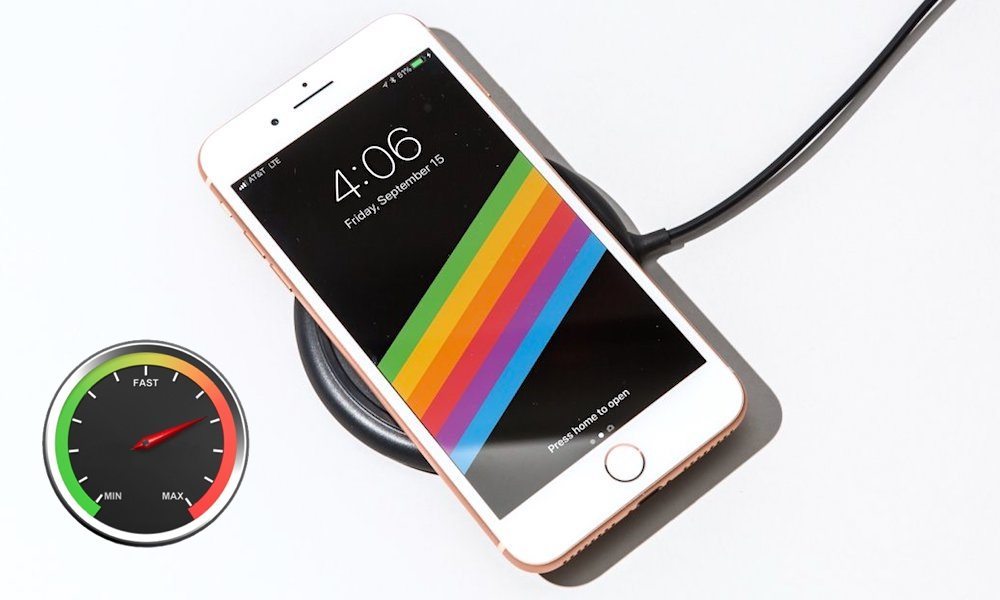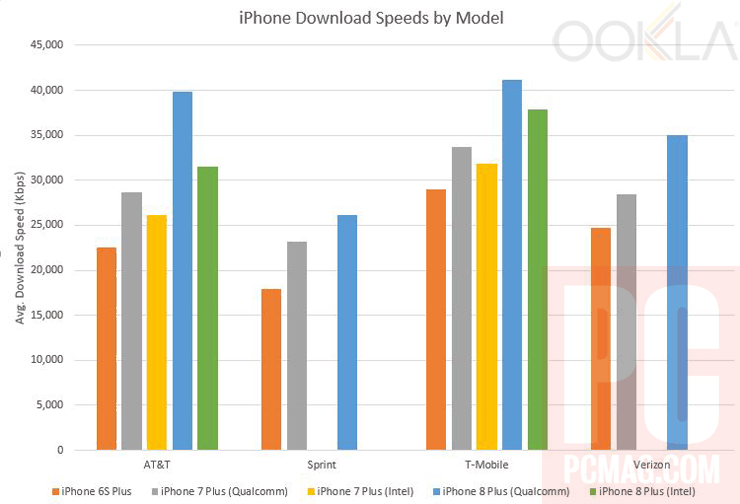iPhone 8 Scores Top Marks for LTE Speeds, But There’s a Catch

Toggle Dark Mode
The iPhone 8 and 8 Plus have scored top marks in LTE speeds, according to recent testing. But there are a few caveats to keep in mind.
The gist of the results is that the iPhone 8 and 8 Plus are the fastest iPhones ever in terms of LTE download and upload speeds, according to a recent in-depth test performed by PC Mag and bolstered by crowdsourced data via Ookla. While the results vary, the iPhone 8 and 8 Plus see a range of improvements in speed and coverage across most carriers.
Of course, that’s not the entire story — and here it gets a bit tricky. The iPhone 8 and 8 Plus still aren’t the fastest smartphones on U.S. networks, since they lack the 4×4 MIMO antenna seen in the Galaxy S8. And tracked performance varies depending on your specific model of iPhone and which channel you purchased it from.
Different iPhone Versions
There are basically three versions of both the iPhone 8 and 8 Plus around the world.
- Unlocked iPhone 8 units, or units sold by Sprint, Verizon and Australian carriers, have a Qualcomm X16 modem.
- iPhone 8 units sold by AT&T, T-Mobile and Canadian carriers have an Intel modem, likely the XMM7480.
- There’s also a Japanese iPhone version, with an unknown modem, that’s sold exclusively in Japan.
PC Mag’s review goes further in-depth, but the general takeaway is that Qualcomm-equipped iPhone 8 models have generally better performance than Intel models. Japanese devices weren’t tested, so there isn’t any data on that. Additionally, in the U.S., the iPhone 8 lacks gigabit LTE support.
Speeds Vary by Version
Across the board, users in the U.S. can expect to see about a 10 percent bump in speed improvements when they use an iPhone 8 or 8 Plus. Interestingly, in Australia, that jumps to a nearly 25 percent improvement due to their unique network structure — but that’s another story.
As seen in the graph below (provided by Ookla), the iPhone 8 and 8 Plus still boast improved speed performance over their predecessors — most notably for AT&T and T-Mobile. Also, note how Qualcomm-equipped devices consistently rank slightly faster than their Intel counterparts.

If mobile broadband speed is the primary thing you’re after, it might be best to opt for the unlocked iPhone 8 or 8 Plus. Presumably, that will also be true for the upcoming iPhone X — something to keep in mind if you’re holding out for that device.
Coverage Also Varies
When it comes to coverage, the results vary, too. Users will see the biggest jump in performance if they’re switching from an iPhone 6 or older, and if they’re on Sprint’s and T-Mobile’s network.
The lack of 4×4 MIMO also contributes to the iPhone’s notorious difficulty in recovering from dead zones. PC Mag conducted a test pitting the iPhone 8 and the Galaxy S8 against each other in a New York subway. In most cases, the iPhone 8 took several seconds longer to regain an LTE signal.
Improvements Can Still Be Made
Despite the speed improvements across the board, the iPhone’s cellular speeds and coverage could be vastly improved with the addition of a 4×4 MIMO antenna structure. But iPhone users will likely have to wait until 2018 to see Apple flagships roll out with the technology.






